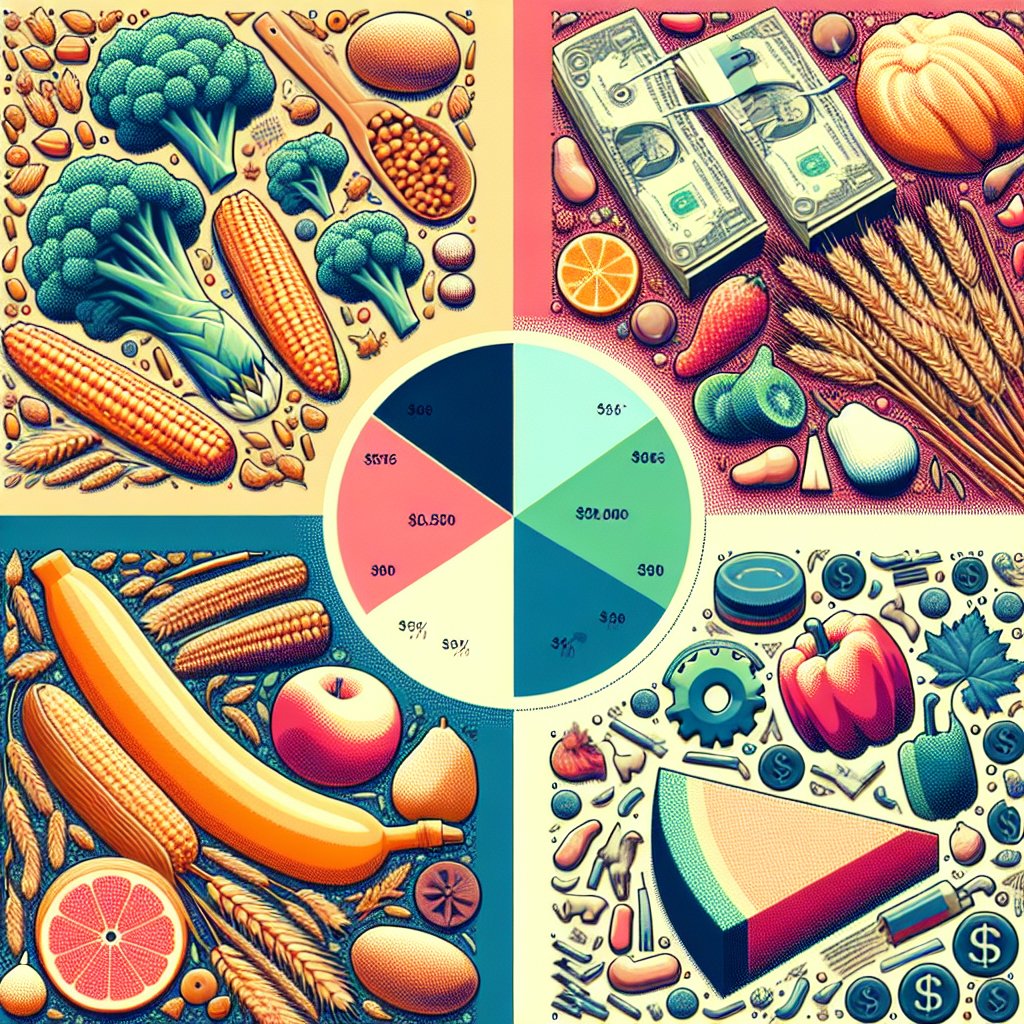The differences in agricultural product prices between regions in Poland are influenced by a variety of factors, including climate, soil quality, market access, and local agricultural practices. Understanding these disparities is crucial for farmers, policymakers, and consumers alike, as they can significantly impact the economic viability of farming in different areas. This article will explore the key factors that contribute to price variations and provide insights into how these differences affect the agricultural landscape in Poland.
Factors Influencing Price Differences
Several factors contribute to the differences in prices of agricultural products across various regions in Poland. These factors can be broadly categorized into environmental, economic, and infrastructural influences.
Environmental Factors
The climate and soil conditions in different regions of Poland play a significant role in determining agricultural productivity and, consequently, prices. For instance:
- Climate Variability: Regions with favorable climates for specific crops tend to have higher yields, which can lead to lower prices due to increased supply. For example, the warm and temperate climate of the Mazovian Voivodeship is ideal for growing cereals, leading to competitive pricing.
- Soil Quality: The fertility of the soil varies across Poland. Areas with rich, loamy soils, such as the Greater Poland Voivodeship, often produce higher-quality crops, which can command higher prices in the market.
- Water Availability: Access to irrigation can significantly affect crop yields. Regions with sufficient water resources, like the Vistula River basin, can produce more consistent harvests, impacting local pricing structures.
Economic Factors
The economic landscape of a region also influences agricultural prices. Key economic factors include:
- Market Demand: Regions with higher population densities, such as Silesia, often experience greater demand for agricultural products, leading to higher prices. Conversely, rural areas with lower demand may see prices drop.
- Production Costs: The cost of inputs such as seeds, fertilizers, and labor can vary significantly between regions. For instance, regions with higher labor costs may see increased prices for their products to maintain profitability.
- Access to Markets: Proximity to major markets and distribution centers can affect prices. Regions closer to urban centers, like Warsaw, benefit from lower transportation costs, which can lead to more competitive pricing.
Infrastructural Factors
The state of infrastructure in a region can also impact agricultural prices. This includes:
- Transportation Networks: Well-developed roads and rail systems facilitate the movement of goods, reducing costs and allowing farmers to reach broader markets. Regions with poor infrastructure may struggle to sell their products at competitive prices.
- Storage Facilities: Access to adequate storage can help farmers manage supply and demand more effectively. Regions lacking proper storage may face price drops during harvest seasons due to oversupply.
- Technological Advancements: Regions that adopt modern farming technologies can increase productivity and reduce costs, leading to lower prices for consumers.
Regional Price Comparisons
To illustrate the differences in agricultural product prices across Poland, we can examine several key regions and their respective pricing trends for major crops.
Central Poland
Central Poland, particularly the Mazovian Voivodeship, is known for its diverse agricultural production. The region benefits from fertile soils and a favorable climate, leading to competitive prices for cereals and vegetables. For example:
- Cereals: Prices for wheat and barley in Mazovia are often lower than in less fertile regions, averaging around 10% less due to higher yields.
- Vegetables: The proximity to Warsaw allows for quick distribution, keeping prices stable and competitive.
Western Poland
Western Poland, particularly the Greater Poland Voivodeship, is another significant agricultural area. The region is known for its potato and sugar beet production. Price trends include:
- Potatoes: Prices in Greater Poland can be higher than in Central Poland due to the region’s reputation for high-quality potatoes, often fetching a premium in local markets.
- Sugar Beets: The sugar beet industry is well-established here, with prices influenced by both local processing facilities and national market trends.
Southern Poland
Southern Poland, including regions like Silesia and Małopolska, has a different agricultural profile. The mountainous terrain limits certain types of farming but allows for the production of high-value crops. Price observations include:
- Fruits: The region is known for its apple orchards, with prices often exceeding those in other regions due to the quality and demand for local varieties.
- Livestock: Silesia has a strong livestock sector, with beef and dairy prices reflecting the higher production costs associated with mountainous farming.
Northern Poland
Northern Poland, particularly the Pomeranian Voivodeship, is characterized by its dairy and grain production. Price dynamics in this region include:
- Dairy Products: The region’s dairy farms benefit from a strong local market, with prices for milk and cheese often higher than the national average due to quality and local demand.
- Grains: While grain prices are generally lower in this region due to less fertile soils, the proximity to the Baltic Sea allows for export opportunities that can stabilize prices.
Conclusion
The differences in agricultural product prices between regions in Poland are shaped by a complex interplay of environmental, economic, and infrastructural factors. Understanding these differences is essential for stakeholders in the agricultural sector, as they can influence everything from farming practices to consumer choices. As Poland continues to develop its agricultural policies and practices, addressing these regional disparities will be crucial for ensuring a sustainable and profitable agricultural future.




